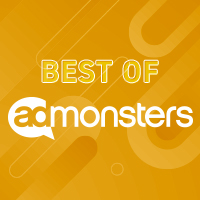How could I get tired of advertising seminars or conferences? Not only can I count on scoring enough pens, pads, and doo-dads to last me until the next one, but I usually end up learning my field of work, too. The Eyes on the Internet 2006 tour, a non-profit tour sponsored by the Online Publishers Association, that stopped in New York City’s Marriot Marquis on June 7th was no exception to any of this. I happily represented ICMediaDirect.com and joined an enthusiastic crowd of fellow attendees to take in their presentation.
Maybe someone slipped me decaf, but it was a little early in the morning to tackle sentences like this, “Our multimedia world requires a consumer-centric multimedia measurement methodology”. It’s like advertising has a secret language we speak to each other with words like branding, reach, penetration – that never quite make it on billboards or banner ads. Anyway, here’s my layman’s translation of the aforementioned: “We’ve stalked normal Americans to see the effect of the Internet in their lives.” And they did, quite nicely too.
OPA commissioned Ball State University’s Center for Media Design to trace a good cross section of people for about 80% of their waking day and their conclusions certainly grabbed me. The web is the #1 workplace medium; the web is extremely potent in partnering with other major media; the web is the most demographically consistent medium, its cross section involves the least skew from demographic to demographic. I guess these findings don’t surprise me, but the beauty of a study lies in its validation. I’m not going to pretend to be Internet Superman (though I’ve been known to on MySpace, Match, Yahoo News discussion boards, and craigslist), okay, I need to be told this. Thanks for the thorough job, Eyes on the Internet. Not only did I leave with your goody-bag, I left carrying your message, too.
This study offers hard data supporting interactive advertising’s expansive capability of complementing other media, even magazines and newspapers. I still remember reading letters to the editors in newspapers and magazines and thinking, “Again with this nonsense, what is this? Janet is from ‘@yahoo.com’? Why do I keep seeing these typos? Geez.” Maybe that wasn’t direct advertising, but it was print directing my attention towards a new medium, I just had no idea at the time.
Mornings between 8 and 11, at print’s peak reach, 17% of people consume print media – and combined with Web consumption, the reach for advertisers goes to 44%. During this same morning period, the magazine reach goes from 7 to 39%.
These studies also confirm what I think we already believe to be true – that a person who logs heavy Internet time is more valuable than one who watches lots of television. There’s no need for us to check data here (though a ‘web dominant’ consumer averages $26,450 retail spending a year, while ‘TV-dominant’ averages $5,000 or less) because we’re talking about couch potatoes. Anyone who is a heavy television watcher is spending lots of time doing nothing. This, in turn, cuts in on income, fun, sociability, and life itself.
For better or for worse, the findings of this study place a premium on the quality of the Internet viewer as a target. The web consumer is more engaged with a variety of other mediums, has and spends more money than the light or non-web consumers, and if an advertiser wants to reach a cross section of everyone equally, without leaving a major demographic like age or gender behind, they can do so most effectively with the Internet.
Yet, in light of this, for some reason, only about 8% of advertising dollars are spent online. Thanks to studies like this, the OPA, and tours like Eyes on the Internet 2006, the message will continue to spread. It’s inevitable.
 Network
Network
